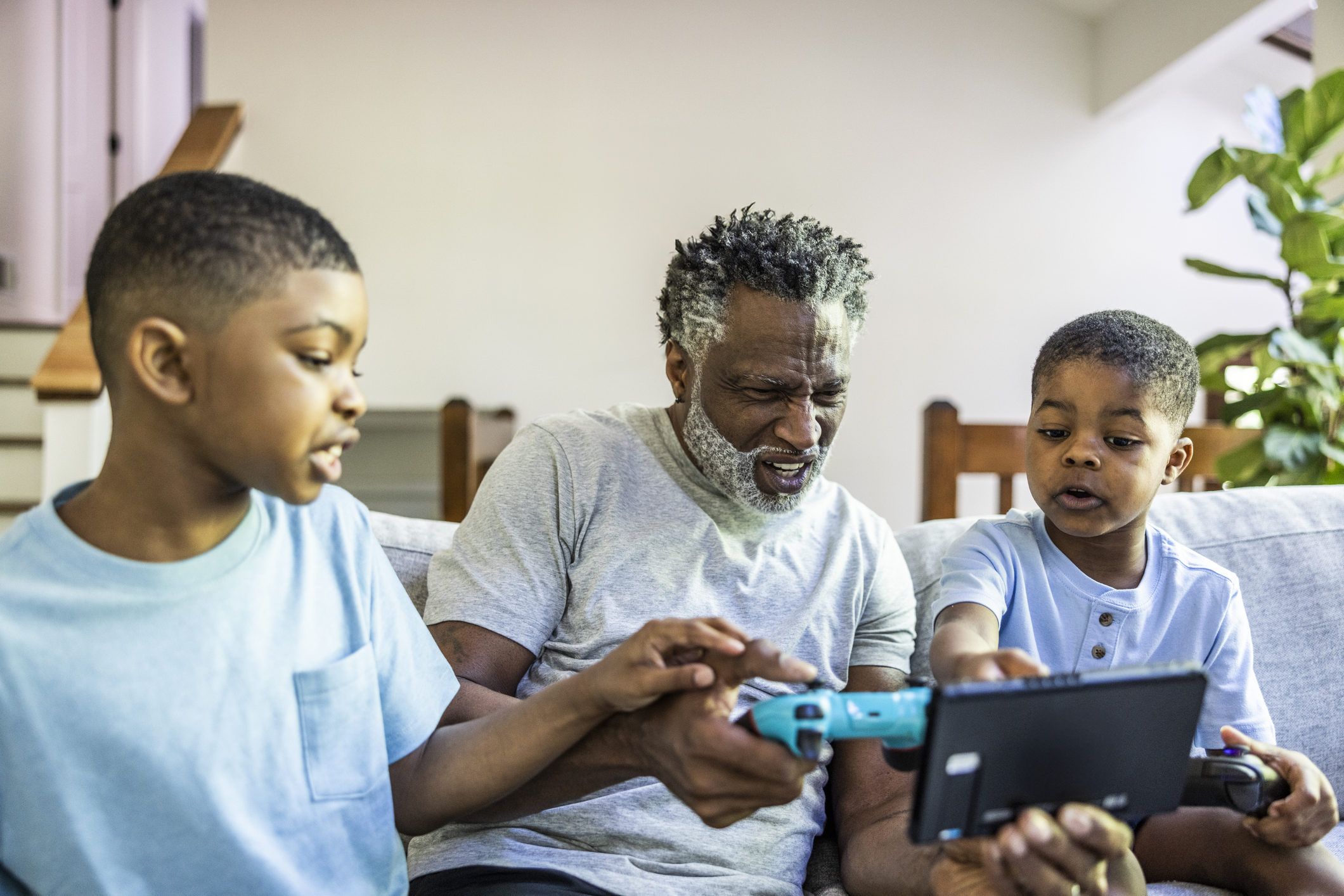Have You Reached 59½? Time to Rethink Your 401(k) Options
A rollover IRA might be in order to help protect your retirement savings from potential (and potentially disastrous) market downturns.


Many Americans save for retirement through a 401(k) offered by their employers, which is wise since the money is automatically taken from their paycheck each pay period and is often supplemented with a company match.
This helps to build a solid retirement fund.
But there’s an important option available with that 401(k) money that people often aren’t aware of and, as a result, don’t act on, much to their detriment.
From just $107.88 $24.99 for Kiplinger Personal Finance
Become a smarter, better informed investor. Subscribe from just $107.88 $24.99, plus get up to 4 Special Issues

Sign up for Kiplinger’s Free Newsletters
Profit and prosper with the best of expert advice on investing, taxes, retirement, personal finance and more - straight to your e-mail.
Profit and prosper with the best of expert advice - straight to your e-mail.
Here’s what it is: Once you reach age 59½, you can move a portion of the money from your 401(k) into a rollover IRA without any penalty, even if you are still employed and even if you and your employer are still contributing to the 401(k).
Tapping the brakes on risk
There are a few reasons why it’s a good idea to take advantage of this option, but the main reason is that a 401(k) usually doesn’t provide the type of conservative investing you should be looking for as you draw closer to retirement.
With most 401(k) accounts, the investment options are limited and are geared toward growth. Typically, the money is invested in a money market fund or a bond fund, both of which come with more risk than you want when you are entering your 60s and are becoming less concerned with growth and more concerned with protecting what you’ve accumulated.
That change in retirement planning philosophy happens — or should happen — because it’s difficult to recover from a big loss when you are older and time is no longer on your side. If you head into retirement during or soon after a down market, you may need to start drawing money from the account before the account has had time to fully recover from the losses. That’s less of a worry for someone in their 30s or 40s who has plenty of years — even decades — to recover. But for those who are older, that lack of recovery time can prove devastating to your portfolio.
Compared to a 401(k), an IRA has a broader range of investment options and often fewer fees, another reason the move can be a good one.
How much to roll over?
Just as an example, perhaps you have been contributing to your 401(k) for a number of years — enjoying the company match all the while — and by the time you are 59½, the account has grown to $500,000. Now is the time to pounce. You can roll over $490,000 of that money into a rollover IRA — with no tax ramifications — and keep $10,000 in the account with your employer.
Wait. Why not go for broke and move the entire amount and just close out the account?
Here’s why: You want to continue the automatic contributions from your paycheck, especially if you are receiving a company match. That’s free money from your employer that you want to take advantage of as long as you are working.
Just how much you move over is up to you and worth discussing with your financial professional. Some people want to roll over most of it. Others might decide to roll over 75% and leave 25% in the 401(k). It all comes down to each individual’s objectives.
Another question you might have is whether you should move the money into a Roth IRA. I do often help my clients set up a Roth, but that happens after the money first goes into the rollover IRA. Generally, I recommend that you then open a Roth with a small amount, such as $100, just to get the clock ticking on the five-year rule. That IRS rule says you can’t begin withdrawing earnings from the Roth tax-free until five years after your first contribution to the account.
Current accounts and dormant accounts
These 401(k) rollovers are something I work on with clients on a daily basis. In many cases, the clients are already in their 60s and simply didn’t realize the rollover IRA was an option. On occasion, when I help a client make the rollover, their spouse is not yet 59½, so the spouse can begin planning to do their own rollover the moment they become eligible.
Sometimes the clients I work with still have 401(k) accounts — even multiple accounts — from previous employers. That isn’t unusual, as it turns out.
According to Capitalize, about one in five Americans have dormant 401(k) accounts, money they left behind when they left a former employer. The average balance in these accounts is $55,400. The money still belongs to these former employees, but the accounts just sit there. No new contributions are being made to them, and there is no thought to how well they are faring in the market and whether the investment options chosen years ago still make the most sense for the individuals who own them.
In a situation with one of those dormant accounts, you don’t even have to wait until you are 59½. If you’ve left your employer, you can roll the money into an IRA regardless of your age. Doing so gives you more control over that money, allowing you to take advantage of the investment options that are best for you at whatever stage of life you are in.
Ultimately, you want to make the best use of your money as you near retirement so that you can enjoy those years the way you always planned. The more knowledgeable you are about your options, the better equipped you are to make the best decisions for your situation.
This is why it helps to have a financial professional in your corner who can discuss with you options you may have not even known existed and can give you strategies on how to best take advantage of those options.
Ronnie Blair contributed to this article.
The appearances in Kiplinger were obtained through a PR program. The columnist received assistance from a public relations firm in preparing this piece for submission to Kiplinger.com. Kiplinger was not compensated in any way.
Investment advisory services made available through AE Wealth Management, LLC, (AEWM). AEWM and The Resource Center are not affiliated companies. 2295943 – 3/24
Related Content
- How to Get More Retirement Income From Your 401(k)
- Can I Hire a Financial Adviser to Manage My 401(k)?
- Five Things I Wish I’d Known Before I Retired
- Retirees’ Anti-Bucket List: 10 Experiences You Don’t Want
- Do You Have at Least $1 Million in Tax-Deferred Investments?
Profit and prosper with the best of Kiplinger's advice on investing, taxes, retirement, personal finance and much more. Delivered daily. Enter your email in the box and click Sign Me Up.

Chris Ballard, an Investment Adviser Representative, is the owner and CEO of Ballard Financial Group, a family-owned business for which his two daughters also work. Ballard has more than 30 years of experience as a financial professional and has earned the CERTIFIED FINANCIAL PLANNER™ designation.
-
 Are T-Mobile's Prepaid Perks a Home Run or a Strikeout?
Are T-Mobile's Prepaid Perks a Home Run or a Strikeout?T-Mobile's prepaid lineup promises MLB.TV, T-Mobile Tuesdays and hotspot data. But do the perks make it worth switching?
-
 Verizon Home Internet Is Offering Free Tech to New Customers
Verizon Home Internet Is Offering Free Tech to New CustomersVerizon’s latest home-internet promotion includes free tech, but the real savings depend on pricing, speed needs and how long you stay.
-
 Retirees in These 7 States Could Pay Less Property Taxes Next Year
Retirees in These 7 States Could Pay Less Property Taxes Next YearState Taxes Retirement property tax bills could be up to 65% cheaper for some older adults in 2026. Do you qualify?
-
 5 Smart Things to Do With Your Year-End Bonus, From a Financial Professional
5 Smart Things to Do With Your Year-End Bonus, From a Financial ProfessionalAfter you indulge your urge to splurge on a treat, consider doing adult things with the extra cash, like paying down debt, but also setting up a "fun fund."
-
 Are You a Gen X Investor? Here's How You Can Protect Your Portfolio From an AI Bubble
Are You a Gen X Investor? Here's How You Can Protect Your Portfolio From an AI BubbleAmid talk of an AI bubble, what's the best course of action for investors in their 50s and 60s, whose retirement savings are at risk from major market declines?
-
 Hey, Retirees: Put Your Charitable Gifts in a Donor-Advised Fund (and Enjoy Your Tax Break)
Hey, Retirees: Put Your Charitable Gifts in a Donor-Advised Fund (and Enjoy Your Tax Break)A donor-advised fund is a simple (really!), tax-smart strategy that lets you contribute a large, tax-deductible gift now and then distribute grants over time.
-
 If You're a U.S. Retiree Living in Portugal, Your Tax Plan Needs a Post-NHR Strategy ASAP
If You're a U.S. Retiree Living in Portugal, Your Tax Plan Needs a Post-NHR Strategy ASAPWhen your 10-year Non-Habitual Resident tax break ends, you could see your tax rate soar. Take steps to plan for this change well before the NHR window closes.
-
 Could Target-Date Funds With Built-In Income Guarantees Be the Next Evolution in Retirement Planning?
Could Target-Date Funds With Built-In Income Guarantees Be the Next Evolution in Retirement Planning?With target-date funds falling short on income certainty, retirement plans should integrate guaranteed income solutions. Here is what participants can do.
-
 Your Year-End Tax and Estate Planning Review Just Got Urgent
Your Year-End Tax and Estate Planning Review Just Got UrgentChanging tax rules and falling interest rates mean financial planning is more important than ever as 2025 ends. There's still time to make these five key moves.
-
 What Makes This Business So Successful? We Find Out From the Founder's Kids
What Makes This Business So Successful? We Find Out From the Founder's KidsThe children of Morgan Clayton share how their father's wisdom, life experience and caring nature have turned their family business into a respected powerhouse.
-
 Past Performance Is Not Indicative of Your Financial Adviser's Expertise
Past Performance Is Not Indicative of Your Financial Adviser's ExpertiseMany people find a financial adviser by searching online or asking for referrals from friends or family. This can actually end up costing you big-time.